Get the week's most popular posts delivered to your inbox.
Our weekly update is free yet priceless and you're less than a minute away from getting the current edition.
In the unlikely event we disappoint, you can unsubscribe with a single click!
Last Updated on January 22, 2025 by teamobn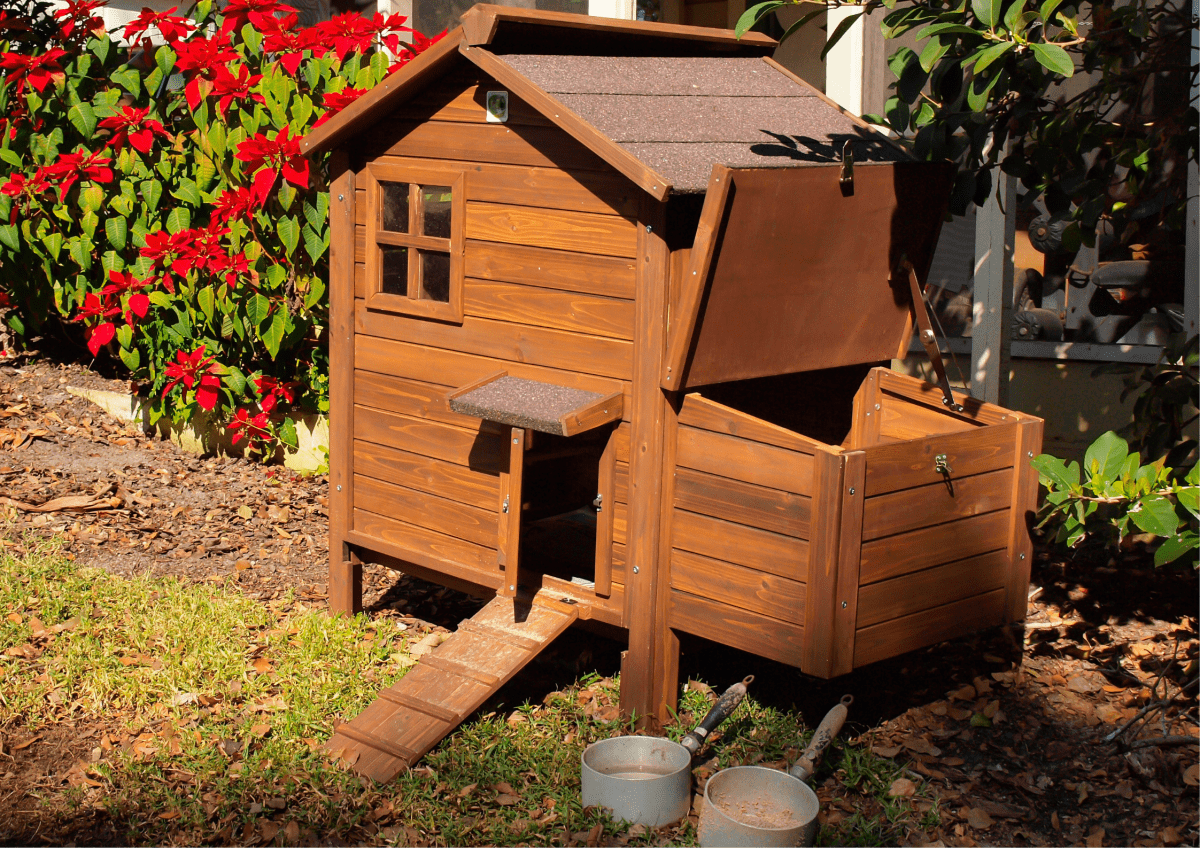
Don’t let your chickens endure the winter chill! Ensuring their warmth and comfort is an absolute necessity for their well-being.
While electric heaters may seem tempting, the associated energy bills can be quite shocking. Additionally, some scenarios may not make electric heating a sustainable choice.
Fortunately, there are several efficient and eco-friendly strategies to keep chickens warm without relying on electricity. In this comprehensive guide, get to explore these alternative methods to ensure your flock remains comfortable throughout the chilliest seasons.
Contents
How to Keep Chickens Warm in Winter on a Budget
With the onset of winter’s cold, prioritizing the comfort and welfare of your feathered companions becomes paramount. While electric heating solutions are easily accessible, they can come with a hefty price tag and may not align with sustainability goals. However, rest assured, as there exist inventive and environmentally-friendly methods to provide warmth to your chickens without relying on electricity.
Unearth ingenious strategies that harness nature’s resources and your ingenuity to provide a cozy and energy-efficient haven for your beloved flock. Ready to try these clever solutions that meet the needs of both your chickens and the planet?
1. Insulated Coop Design
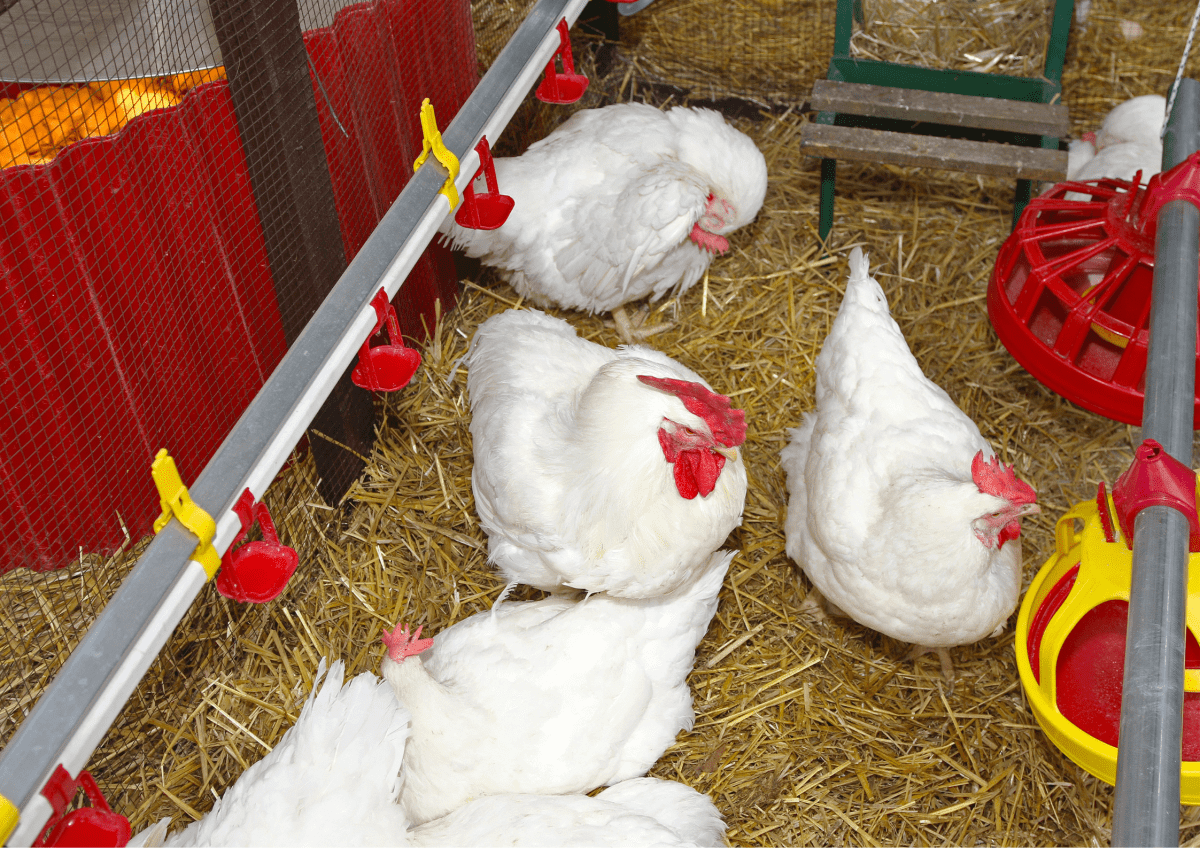
The foundation of cold-weather chicken care begins with the coop itself. Design your chicken coop with insulation in mind. Ensure that walls, floors, and ceilings are well-insulated to trap heat inside and block out the cold. Common insulation materials include straw, hay, or even recycled denim.
Not only does a well-insulated coop keep your feathered friends warm, but it also cuts down on pricey heating bills. It’s a two-for-one deal that’ll have you and your wallet feeling like winners all season long. So why not give your chickens the gift of a well-insulated home and enjoy the financial benefits?
2. Proper Ventilation
While insulation is vital, don’t forget about ventilation. Adequate airflow is essential to prevent moisture buildup, which can lead to frostbite. Install vents near the roofline of the coop so the warm, moist air escapes while keeping cold air near the ground and to Keep chickens warm.
While insulation is necessary to keep chickens warm, ventilation is an essential partner in this endeavor. Together, they create an environment that ensures your chickens’ health and comfort, even during the coldest of days. Finding the right balance between these two factors is the key to providing your flock with a cozy and well-ventilated home.
3. Deep Litter Method
The deep litter method involves adding layers of bedding material (such as straw or wood shavings) to the coop floor and letting them decompose over time to Keep chickens warm. This natural decomposition process generates heat, helping to keep the coop warm. Regularly turning the bedding keeps it fresh and effective.
Knowing how to keep chickens warm in winter through well-managed bedding that also contributes to reducing stress among your chickens. Stress can weaken their immune systems, making them more susceptible to illnesses. By helping them maintain a consistent, cozy temperature, you promote their overall well-being, leading to healthier and happier chickens.
4. Solar Heating
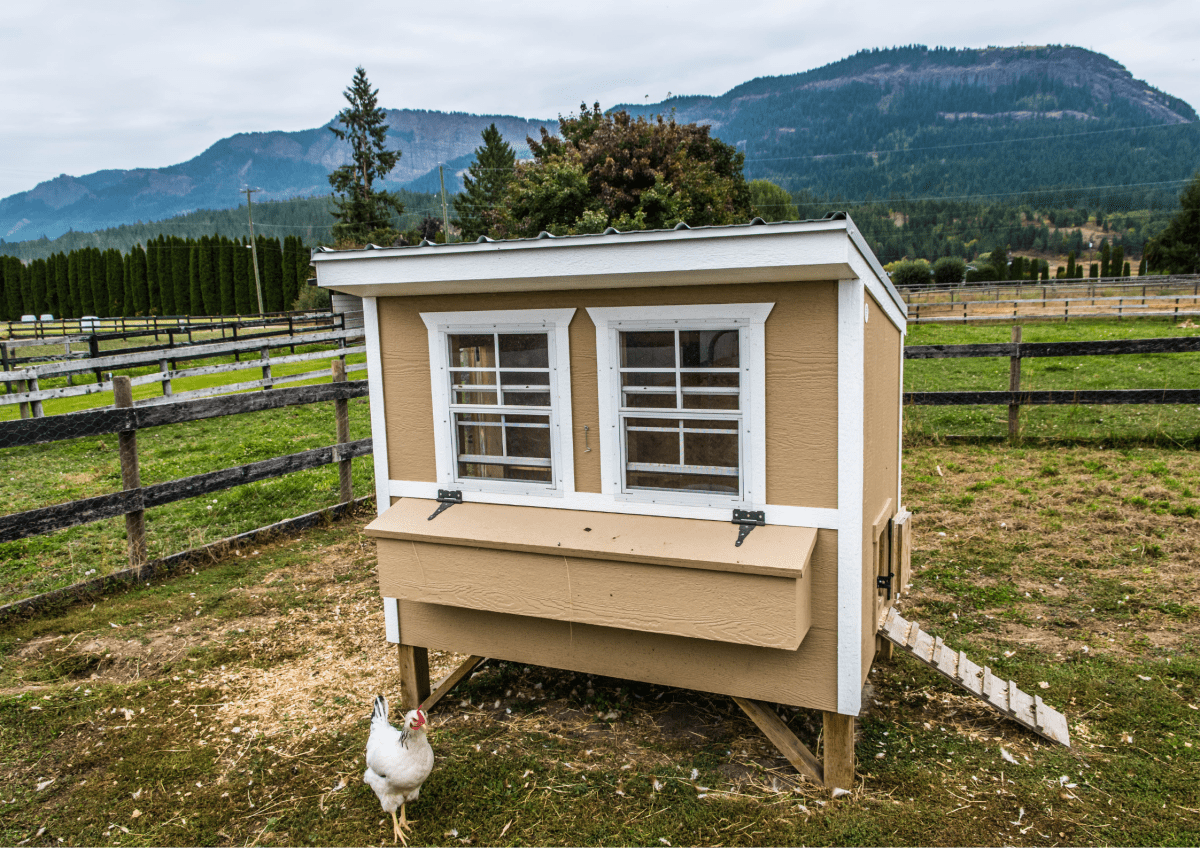
Harness the power of the sun with passive solar heating techniques. Position your coop to maximize sunlight exposure during the day.
This not only promotes their well-being but also reduces the need for additional heating sources, making it a sustainable and cost-effective choice for poultry enthusiasts who want to keep chickens warm while minimizing energy consumption.
Dark-colored materials like asphalt or rubber also absorb heat and can be placed in the coop for additional warmth.
5. Use of Thermal Mass
The strategic use of thermal mass within the chicken coop is a remarkably effective way on how to keep chickens warm in winter, leveraging natural heat storage to create a more stable and comfortable environment for your flock. By placing dense materials like bricks, concrete blocks, or large stones inside the coop, you capitalize on their ability to absorb and store heat throughout the daylight hours.
These materials then slowly release the stored heat overnight, counteracting the drop in temperature that typically occurs when the sun goes down. This process of heat absorption and gradual release ensures a consistent temperature within the coop, significantly aiding in your efforts to keep chickens warm.
Integrating thermal mass into your coop’s design doesn’t just contribute to maintaining a steady temperature; it also enhances the overall energy efficiency of your heating strategy. By reducing the reliance on artificial heat sources, you not only save on energy costs but also minimize the environmental impact of keeping your coop warm.
Ensuring these heat-absorbing materials are strategically placed where they can receive direct sunlight during the day will maximize their effectiveness, creating a warmer, more inviting space for your chickens during the cold nights.
6. Cold-Hardy Chicken Breeds
Consider choosing cold-hardy chicken breeds for your flock. Some breeds, like the Rhode Island Red or Plymouth Rock, are better equipped to handle cold temperatures. Their thicker feathers and robust constitution make them less susceptible to cold-related health issues.
Incorporating cold-hardy breeds into your flock means you have chickens that are not only better adapted to cooler climates but also require less intervention on how to keep chickens warm in winter. This natural resilience complements your coop’s heating and insulation strategies, creating a synergistic effect that enhances the overall warmth and comfort of your coop.
By choosing breeds that are predisposed to thrive in colder conditions, you significantly reduce the risks of cold stress and health issues in your flock, ensuring a happier, more productive group of chickens throughout the winter months.
7. Companionship and Body Heat
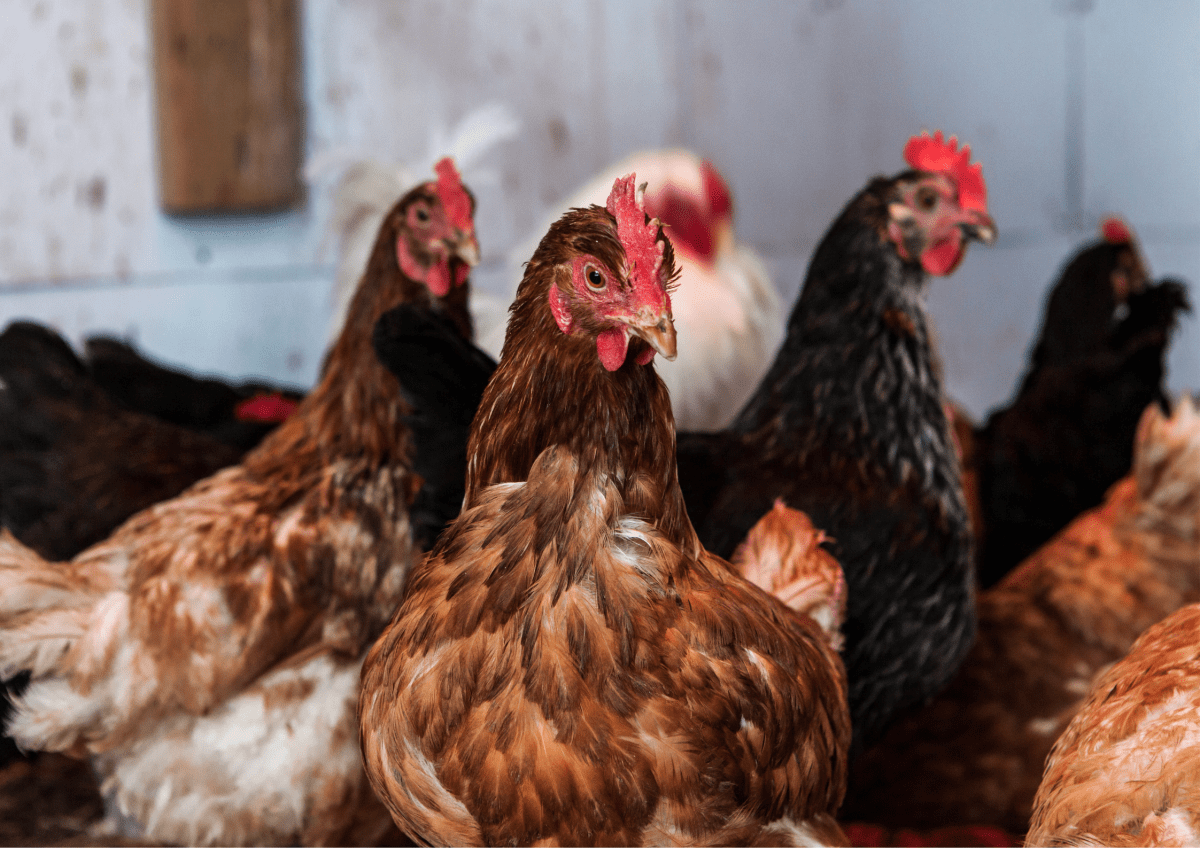
Chickens generate body heat, and when they huddle together, they create a warmer microclimate. Ensure that your coop has adequate space for your chickens to roost together during the colder nights. The more crowded they are, the warmer they’ll stay.
While a crowded coop can help keep chickens warm, it’s essential to ensure that there is still sufficient space for all birds to move around comfortably. Overcrowding can lead to stress, aggression, and health issues.
8. Draft Protection
Seal any drafts or gaps in the coop that might let cold air in. Check for leaks around doors, windows, and vents. Weatherstripping and caulking can be invaluable in keeping your chicken coop draft-free. By preventing cold drafts, you create a consistent and warm space for your chickens, reduce the risk of health issues, encourage natural behaviors, and even save on heating costs.
A draft-free coop helps keep chickens warm and contributes to their overall health and happiness.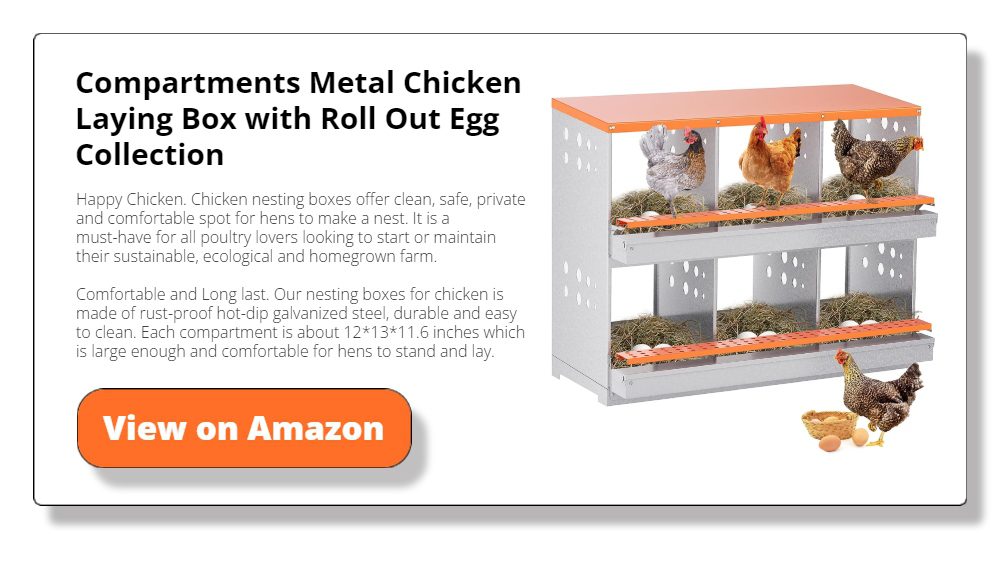
9. Thawed Watering Solutions
Frozen water can be a concern in cold weather. Black rubber water tubs are likely one of the most effective non-electric solutions for preventing your chickens’ water from freezing. You can also consider dark blue, purple, or burgundy containers, as they would serve the same purpose effectively.
These measures ensure that chickens have a consistent supply of warm water, which plays a pivotal role in safeguarding their overall well-being.
Enhanced Coop Insulation Techniques
Keeping chickens warm during the cold months is essential for their health and productivity. While traditional insulation methods can be effective, exploring enhanced coop insulation techniques offers a more sustainable and efficient way to keep chickens warm without relying on electricity. These advanced strategies not only ensure the well-being of your feathered friends but also contribute to environmental conservation.
Let’s explore innovative approaches to keeping chickens warm by optimizing your coop’s insulation.
Reflective Insulation
Reflective insulation stands out as a premier solution to keep chickens warm, leveraging the principle of radiant heat reflection. This innovative method involves lining the interior of the chicken coop with reflective materials such as aluminum foil-faced insulation panels.
These panels act as a barrier, reflecting the chickens’ body heat into the coop rather than allowing it to escape through the walls. The effectiveness of reflective insulation is most notable in sunny locales, where the external surfaces of the coop can absorb sunlight and then redirect this heat back inside through the reflective interior surfaces.
The process significantly reduces the need for electrical heating systems, making it an eco-friendly option to keep chickens warm. Installing reflective insulation ensures the coop remains a snug haven for poultry, maximizing the natural and generated warmth to maintain a comfortable living environment.
Double-Glazed Windows
Double-glazed windows are a sophisticated addition to any chicken coop, designed to bolster insulation and keep chickens warm. By featuring two layers of glass with an air gap in between, double-glazed windows act as an effective insulator against cold air penetration.
This dual-layer setup minimizes heat loss from the coop, ensuring the warmth remains where it benefits the chickens the most. Beyond the primary goal of keeping chickens warm, these windows invite natural sunlight into the coop.
The window’s insulation property is crucial for the chickens’ health, particularly during the winter months when daylight hours are reduced and the sun’s warmth is less intense. Double-glazed windows thus serve a dual purpose: they keep chickens warm and enhance their living conditions by providing ample light, contributing to their overall well-being and productivity.
Eco-Friendly Insulating Materials
Transitioning to eco-friendly insulating materials marks a significant step forward in efforts to keep chickens warm while embracing sustainability. Though somewhat effective, traditional insulating materials can present challenges, including pest infestation and environmental concerns. In contrast, alternatives like sheep’s wool, hemp, and recycled denim emerge as superior choices for coop insulation.
These materials are highly efficient in retaining heat and bring environmental benefits, such as being biodegradable and sourced from renewable resources or recycled goods. Using these eco-friendly materials to keep chickens warm aligns with a broader commitment to sustainability.
Insulating materials provide excellent thermal resistance, ensuring the coop remains warm and comfortable for the chickens without compromising health or environmental integrity. By choosing these materials, poultry keepers can create a warm, pest-free environment that supports their chickens’ well-being and the planet’s health.
Insulation Upgrades
Upgrading your coop’s insulation is crucial to ensuring your feathered residents stay comfortable throughout the colder months. Simple enhancements, such as adding an insulation layer to the walls, ceiling, and floor, can significantly impact.
Rigid foam boards are particularly effective for this purpose, boasting high R-values instrumental in keeping chickens warm. These boards work by trapping air and minimizing the heat flow, creating a more stable and warm environment inside the coop.
However, upgrading insulation isn’t just about adding more material; addressing any structural weaknesses where heat might escape is critical. Sealing all gaps and cracks with caulk or applying weatherstripping around windows and doors are vital steps in fortifying your coop against the cold.
These measures ensure that the heat generated within the coop, whether from the chickens themselves or supplemental heating sources, remains inside, thus enhancing your efforts to keep chickens warm.
Natural Windbreaks
Using natural windbreaks is an innovative approach to complement direct insulation efforts and keep chickens warm. By planting evergreen trees or shrubs strategically around the coop, particularly on the north and west sides, you can significantly diminish the impact of chilling winds.
Natural windbreakers not only aid in maintaining a warmer environment inside the coop but also contribute to the aesthetic appeal and ecological health of your property. Natural windbreaks act as a barrier against cold winds, reducing the heat lost from the coop and providing a more sheltered space for your chickens.
Coop Positioning
Lastly, the positioning of your chicken coop can play a significant role in its insulation efficiency. If possible, position placement of your chicken coop on your property can dramatically influence its ability to keep chickens warm. Positioning the coop to take advantage of natural sunlight, especially during the early hours of the day, can naturally increase the interior temperature. Ensuring that the coop is oriented to receive maximum sunlight during the colder months allows for solar heat absorption, which is then retained by the upgraded insulation.
This strategic positioning, combined with the insulation enhancements and natural windbreaks, forms a comprehensive approach to keeping chickens warm, reducing the need for artificial heating, and promoting a healthier environment for your chickens.
Behavioral Adaptations for Cold Weather
As the cold weather sets in, chickens, like many animals, exhibit a range of behavioral adaptations to cope with the drop in temperature and maintain their well-being. These natural instincts and behaviors are crucial for their survival and comfort during the colder months. Understanding these behaviors can help poultry keepers better prepare and support their flocks through winter.
Here, we explore the key behavioral adaptations chickens use to keep warm and thrive in cold weather.
Huddling Together
One of the most noticeable behaviors is the tendency of chickens to huddle together. This communal effort to keep chickens warm works by conserving body heat and reducing the exposed surface area to the cold air.
By snuggling closely with their flock mates, chickens can maintain a warmer microenvironment, effectively combating the cold. This behavior underscores the importance of providing enough space in the coop for chickens to huddle without overcrowding, ensuring each bird can benefit from the shared warmth.
Reducing Activity Levels
Chickens naturally reduce their activity levels during colder periods. Lower activity helps to keep chickens warm by conserving energy that would otherwise be lost through movement. This behavior can be observed as chickens spend more time roosting and less time wandering about their coop or run. Poultry keepers can support their flocks during this time by ensuring that there are ample comfortable, roosting spots that allow the chickens to rest and conserve energy.
Feather Fluffing
Feather fluffing is a critical behavior chickens use to insulate themselves against the cold. By puffing up their feathers, chickens trap air close to their bodies, creating an insulating layer that helps to keep them warm. This behavior is often observed in conjunction with huddling, as chickens maximize their warmth through both shared body heat and individual insulation. Providing a wind-free environment can enhance the effectiveness of feather fluffing, as drafts can disrupt the insulating air layer trapped by the feathers.
Seeking Shelter
Instinctively, chickens seek shelter to escape the cold, wind, and snow. This behavior drives them to spend more time inside the coop, where they can benefit from structural protection and insulation. Ensuring that the coop is well-insulated and free from drafts is essential in supporting this natural inclination to seek a warmer, protected environment.
Additionally, offering areas within the coop where chickens can perch away from the ground can help them avoid cold floors, further aiding in their efforts to keep warm.
Sunbathing
On sunny days, even in winter, chickens are often found sunbathing. This behavior allows them to absorb warmth directly from the sunlight, providing a natural and efficient way to raise their body temperature.
Encouraging this behavior can be as simple as positioning the coop and run to maximize sun exposure during the day, enabling chickens to take full advantage of sunny periods to keep warm.
Understanding these behavioral adaptations is key to providing optimal care for chickens during the cold weather. By recognizing and supporting these natural tendencies, poultry keepers can ensure their flocks not only survive but thrive throughout the winter, maintaining health, happiness, and productivity.
Summary
It is not only possible to keep chickens warm without electricity but also sustainable and cost-effective. By implementing these efficient strategies, you can provide your feathered friends with a cozy and comfortable environment, even during the coldest months.
Keep in mind that success hinges on having the proper insulation, excellent ventilation, and a thoughtfully designed coop. With these methods, you can keep chickens warm, ensuring their contentment, health, and happiness even in the most challenging weather conditions.
FAQ: How to Keep Chickens Warm in Winter
- What should I feed my chickens to help them stay warm?
- In winter, chickens burn more calories to keep warm, so a diet high in protein and calories can help maintain their energy levels. Feeding them warm foods, such as oatmeal or cooked potatoes, especially in the mornings, provides extra warmth and sustenance. High-protein snacks like cracked corn, given in the evening, help generate internal heat during digestion, helping them stay warm overnight.
- How can I prevent my chickens’ water from freezing?
- Access to unfrozen water is crucial, as dehydration in cold weather can lead to health issues. Using black rubber tubs or positioning water inside an old tire filled with straw can keep water from freezing longer by trapping heat. If feasible, a heated water base is effective for preventing freezing, though it requires electricity.
- What steps can I take to prevent frostbite on chickens’ combs and wattles?
- Applying a protective layer of petroleum jelly or a natural alternative like coconut oil to chickens’ combs and wattles can guard against frostbite, especially for breeds with large combs. This helps insulate these sensitive areas from moisture and extreme cold, which are primary frostbite contributors.
- Is it okay to let chickens free-range in the winter?
- Chickens can free-range during winter with some precautions. Clear snow and provide straw or wood shavings outside the coop to prevent their feet from getting too cold. Avoid forcing them outdoors, as they may instinctively stay inside on colder days, especially if snow or ice makes walking uncomfortable.
- How can I tell if my chickens are too cold?
- Watch for signs like shivering, pale combs, reluctance to eat or drink, and lethargy. Chickens showing any of these symptoms may need extra warmth, such as additional bedding or insulation in the coop, and in severe cases, temporary indoor warming.
Get the week's most popular posts delivered to your inbox.
Our weekly update is free yet priceless and you're less than a minute away from getting the current edition.
In the unlikely event we disappoint, you can unsubscribe with a single click!






